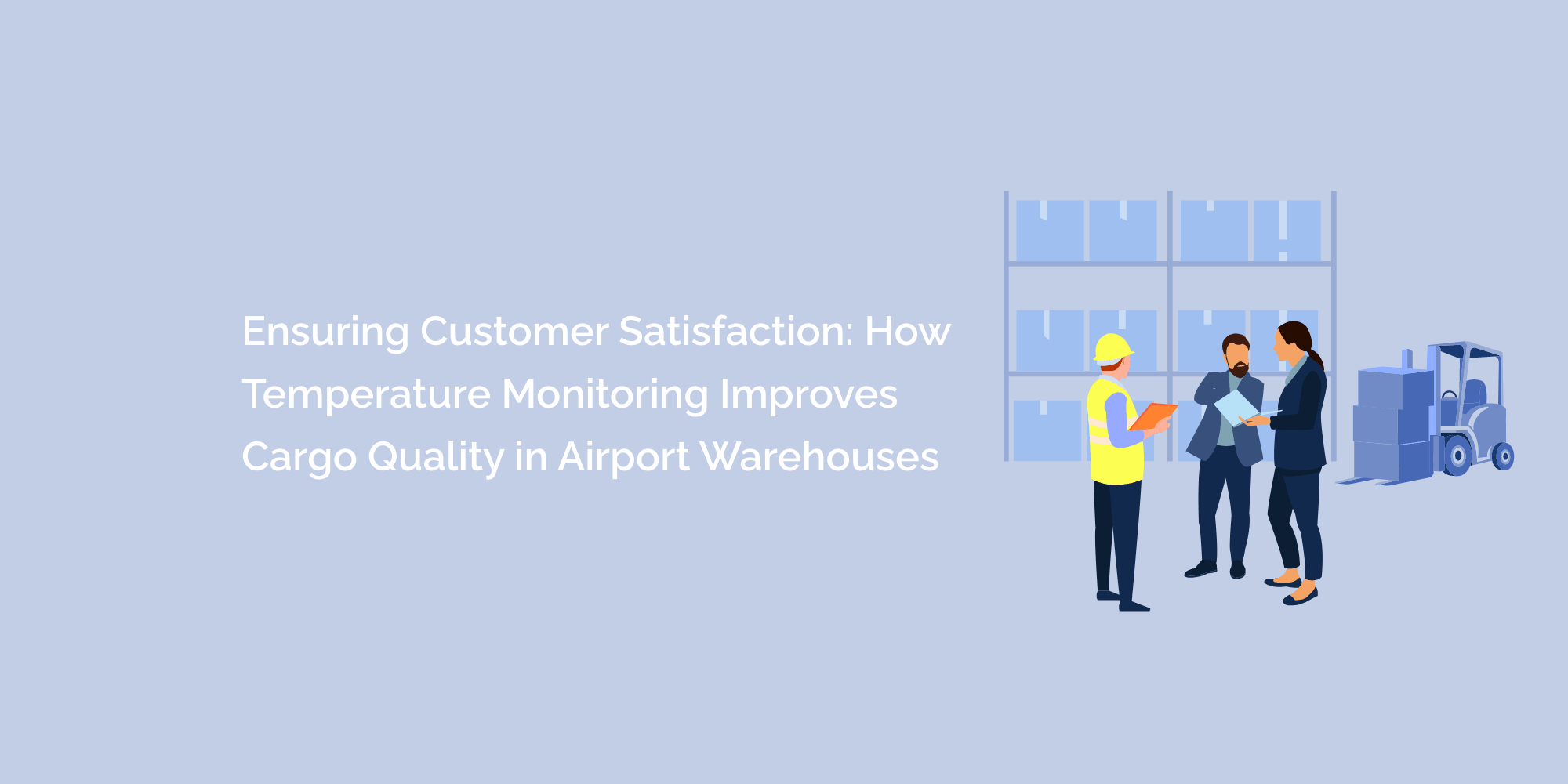In the fast-paced world of global trade, customer satisfaction is a key priority for businesses across various industries. Ensuring the safe and efficient handling of cargo is crucial to meet customer expectations and maintain a competitive edge.
Temperature-sensitive cargo, such as pharmaceuticals, perishable goods, and electronics, demands precise storage and transportation conditions to maintain its quality and integrity.
Airport warehouses, serving as critical hubs in the supply chain, play a pivotal role in ensuring cargo quality. Temperature monitoring systems have emerged as an essential tool to achieve this goal, offering real-time insights and proactive risk management.
In this blog, we will explore how temperature monitoring improves cargo quality in airport warehouses, ultimately leading to enhanced customer satisfaction.
1. The Significance of Cargo Quality in Customer Satisfaction:
Customer satisfaction hinges on the quality of products received by end-users. This section will discuss the direct link between cargo quality and customer satisfaction, emphasizing the impact of temperature-sensitive goods on consumer experience.
2. Understanding the Impact of Temperature on Cargo Quality:
Temperature fluctuations can have a profound impact on the quality and safety of temperature-sensitive cargo. In this section, we will explore how temperature affects different types of goods, such as pharmaceuticals, fresh produce, and electronics, and highlight the potential consequences of improper temperature control.
3. The Role of Airport Warehouses in Ensuring Cargo Quality:
Airport warehouses act as critical nodes in the supply chain, responsible for handling and storing temperature-sensitive cargo before distribution. This section will elucidate the role of airport warehouses in maintaining cargo quality and why temperature monitoring is pivotal to achieving this objective.
4. The Advantages of Temperature Monitoring in Airport Warehouses:
a) Real-time Temperature Tracking: Temperature monitoring systems provide real-time data on cargo conditions, enabling warehouse operators to detect deviations immediately and take corrective actions promptly.
b) Proactive Risk Mitigation: By identifying potential temperature-related risks, warehouses can proactively address issues before they escalate, preventing cargo damage and wastage.
c) Compliance and Quality Assurance: Temperature monitoring ensures compliance with industry regulations and quality standards, enhancing the overall credibility and reputation of the warehouse.
d) Customer-Centric Approach: Through temperature monitoring, warehouses can prioritize customer satisfaction by delivering high-quality, intact goods.
5. Types of Temperature Monitoring Systems:
This section will explore the different types of temperature monitoring systems available in the market, including data loggers, wireless sensors, and cloud-based solutions. Understanding the functionalities of each system will help warehouse operators choose the most suitable option for their specific needs.
6. Successful Implementation of Temperature Monitoring Systems:
Implementing temperature monitoring systems requires careful planning and execution. This section will discuss the key factors for successful implementation, including system integration with warehouse management software, staff training, and setting up remote monitoring capabilities.
7. Case Studies:
To highlight the impact of temperature monitoring on cargo quality and customer satisfaction, this section will present real-life case studies of airports that have successfully implemented temperature monitoring systems. These case studies will showcase tangible improvements achieved in cargo quality, on-time deliveries, and customer feedback.
8. Measuring the Return on Investment (ROI) of Temperature Monitoring:
Warehouse operators often seek tangible ROI when investing in temperature monitoring systems. This section will discuss the metrics used to measure the ROI, such as reduced cargo spoilage, minimized wastage, and increased customer satisfaction.
9. The Future of Temperature Monitoring:
As technology continues to evolve, the future of temperature monitoring looks promising. This section will explore upcoming trends, such as AI-driven analytics, blockchain integration, and advanced IoT sensors, and how these developments will further enhance cargo quality and customer satisfaction.
Conclusion:
Temperature monitoring systems have emerged as a game-changer in ensuring cargo quality and, consequently, customer satisfaction in airport warehouses. By providing real-time insights, proactive risk management, and compliance assurance, temperature monitoring empowers warehouse operators to deliver high-quality, intact goods to customers worldwide.
As the aviation industry continues to embrace technological advancements, the future of temperature monitoring holds exciting possibilities for further enhancing cargo quality and solidifying customer loyalty. Through temperature monitoring, airport warehouses can maintain their competitive edge and build a reputation for excellence in the global logistics landscape.








